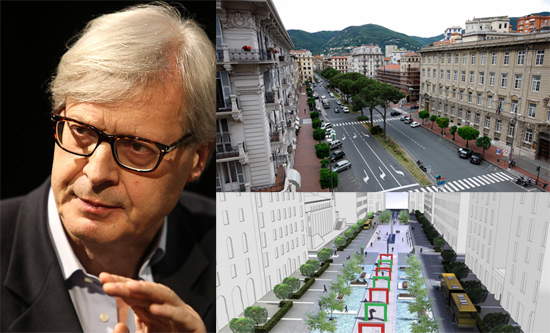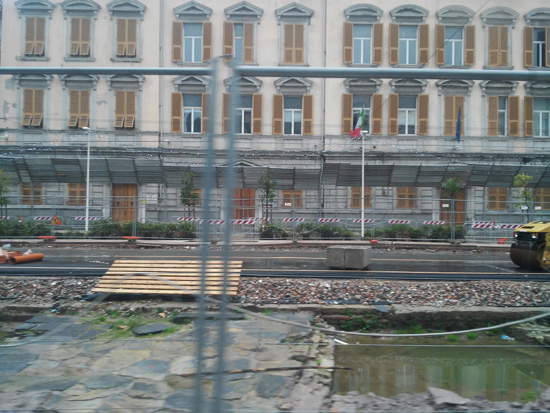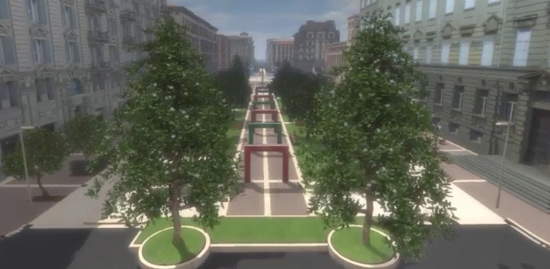Fear and delirium in Las Pezia: from Sgarbi (unlikely?) mayor to the long-running affairs of Verdi Square
In the country in which megaphones, more or less jammed and more or less accustomed to profanity, have sometimes proven to transform endorsement for a cause or a movement into concrete political action, there are strips of land that, for various reasons, more than others lend themselves to becoming easy terrain for repeated incursions by characters to whom a certain media fortune arrives: we know something about it here, on the border between Liguria and Tuscany, an area where Vittorio Sgarbi ’s appearances seem to have intensified quite a bit. You can find him in Carrara, while on a late-night tour of exhibitions and museums he knocks janitors and former council presidents out of bed (the former to have their facilities opened, the latter to have someone to express their excitement about the wonders they have just seen by phone). You can find him in Pietrasanta, while from the good salons of the Versilia town he announces yet another mayoral candidacy for some city in Italy (this time it was Milan’s turn). And you can also find him in La Spezia (or rather: in La Spezia, strictly without an article as the colloquial parlance of the city and the neighboring municipalities within a radius of at least one hundred kilometers wants), where he also finds time to do something really good and interesting (said without irony), that is, to support with force, risks for the coronaries and assorted insults the reasons of that large part of the citizenry that intends to oppose a senseless project concerning one of the main squares of the city, that is, Piazza Verdi.
It happens, then, that a certain wing of the protest, who knows whether opposed to the Vannetti-Buren project out of true empathy with those who would like La Spezia’s administrators to use EU money not to fiddle with archistars but to solve the city’s problems of decay, or out of mere (and somewhat sleazy) political opposition, is looking for figures who can embody its vision about the city’s future. After all, there will be elections next year. Rumors, in short, chase each other, and when they are found they end up in the pages of the local newspapers, which speak of (unlikely?) candidacies for the post of mayor of La Spezia, with a Vittorio Sgarbi seen as a potential first citizen that the center-right could oppose, as a salvific “name taken from civil society,” to the tiring monotony of “boiled politicians.” Nothing new on the Western front: the day before his presence in Pietrasanta mentioned above, Sgarbi expressed his willingness to run for mayor of Trieste, and a few days later he turned down instead the candidacy for first citizen of Bologna. In short: combining all the cities for which Sgarbi’s name has been hypothesized as that of the future mayor would result in a fine edition of the Giro d’Italia. It is therefore to be expected that the Ligurian voice is destined to remain as such: also because already a horde of people from La Spezia, shouting “belin, anzi che Sgarbi sindaco andemo a stae a Carrara!”, is already expressing its very strong opposition. And it should be noted that a spezzino who expresses the intention of wanting to live in Carrara is a bit like a fervent Catholic who, during a mass, takes himself in front of the altar performing a thunderous blasphemy. Oh, and while we’re at it, I apologize to the people of La Spezia in listening and viewing for attempting to reproduce, as a Carrarino (so surely badly), their dialect.
 |
| Vittorio Sgarbi(credit), Piazza Verdi as it was before the work, and the first draft of the Vannetti-Buren project |
Jokes and parochial divisions aside, the events surrounding La Spezia speak to us of a city toward which the municipal administration has been using very little regard for years. Numerous examples could be given: from the suburbs now affected by deep degradation, through steadily rising unemployment, waste and pollution emergencies, to recent developments around the port master plan, a matter from whose participation the citizenry, once again, seems to have been excluded. In the face of all this, the Piazza Verdi affair is almost a kind of example of how the administration led by Mayor Massimo Federici has managed the city: little involvement of the citizenry, very little inclination for dialogue, energy and resources spent on projects and situations that were not priorities.
 |
| The Verdi Square construction site a few days ago |
We have intervened on Verdi Square several times, both on our website and on our Facebook page. Compared to the developments we had given an account of on this space (we had stopped at the time when, unfortunately, work had begun on the felling of the square’s octogenarian pines), in the last year and a half the affair has become even more eventful. As had been widely predicted, there was an appeal to the Council of State, which, however, ruled in favor of the municipality, causing the work to resume, and in the meantime the already high cost of the project had experienced a conspicuous increase. But it was not over yet: early last summer, during the work, remains of buildings were being unearthed on which the Ligurian Superintendency wanted to carry out investigations. The discovery thus brought a new stop to the work, causing considerable irritation in the municipal administration, which reacted, through the mouth and hand of the mayor, with anindignant letter to Minister Franceschini (whom Federici addressed with a “you” as confidential as it was inappropriate). A letter in which, in line with the tendencies of the national PD, one vehemently lashed out at the Superintendency, guilty of “moving to the detriment of an entire community” (!) in that it would prevent the continuation of the work. The Soprintendenza, after determining that the remains were those of the 19th-century Politeama Duca di Genova, allowed the work to resume (albeit only in the area of the square not affected by the excavations), and forced the municipal administration to modify the project for Piazza Verdi in order to enhance the finds: the municipality then appealed again to the Tar against the decision of the body in charge of the protection of cultural heritage. The rest is history of just a few weeks ago: the Tar, at the end of January, proved the municipality wrong, but it does not intend to give up; the committees opposed to the project claim that there are grounds for claims for fiscal damages; and further controversy has arisen regarding La Spezia’s road system, which has been greatly distorted (and made even more chaotic than it already is) by the project, which in recent days has moreover experienced the approval, by the Superintendence, of the variant. A variant that would involve the restoration of the green space removed from the square and the preservation of the findings.
 |
| The new project for Verdi Square |
In La Spezia we witnessed, in essence, what we are used to in the cultural heritage sector even on a national scale: waste, pharaonic projects but of dubious utility, clashes between institutions, citizenship excluded. And, of course, unheeded opinions: a collection of signatures was also promoted for Piazza Verdi, which met important adhesions, from scholars, university professors, journalists, writers, publishers, scientists (and which, of course, did not help at all). In this city, too, the administration has followed the dictates of the current leader of the main national party, and echoing the renzian dictum that “the superintendencies also and above all bind and protect junk,” the mayor of La Spezia expressed his indignation at the Genoese Superintendency, which was “personally involved in protecting the discovery of some stones, formerly the foundations of a nineteenth-century theater demolished about a century ago because they were of shoddy features.” In reality, it was decided to demolish the Politeama Duca di Genova not for the reasons mentioned by a mayor who reinvents himself as an architectural historian, but simply because the building would have prevented the opening of Via Vittorio Veneto: after all, it is known that the Fascist regime (the demolition took place in 1933), when it came to flattening neighborhoods to build new buildings, did not have too many scruples. Imaginative reinterpretation of history is also the prerogative of certain politicians. The problem is that it is the citizens who suffer the consequences of the choices of these certain politicians, who are often prone to arrogance and an unwillingness to confrontation. Who in La Spezia, as in all of Italy, are asking for nothing but more care for them: and care for citizens should be the basis of any country that wants to call itself democratic.
Warning: the translation into English of the original Italian article was created using automatic tools. We undertake to review all articles, but we do not guarantee the total absence of inaccuracies in the translation due to the program. You can find the original by clicking on the ITA button. If you find any mistake,please contact us.



























